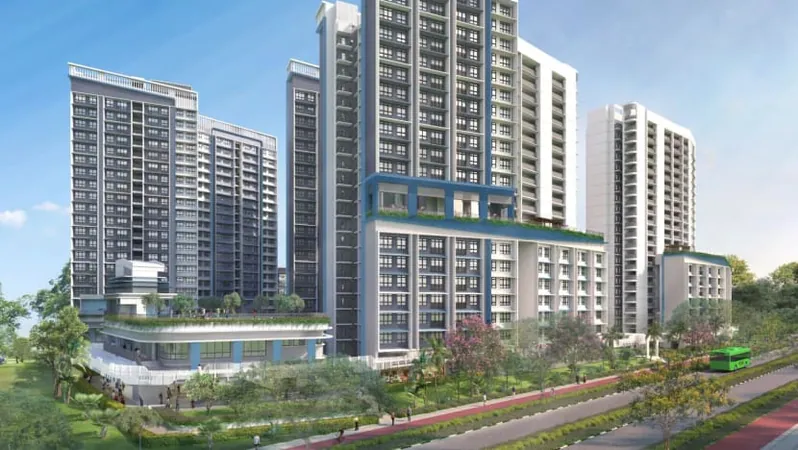
Unpacking the Surge: Why Demand for Prime and Plus BTO Flats Remains Unshaken
2024-10-31
Author: Daniel
In a surprising turn of events, over 35,600 applications flooded in during the October Build-to-Order (BTO) flat sales exercise, marking a significant uptick since August 2022. This surge highlights an unyielding demand for Plus and Prime Housing and Development Board (HDB) flats, even amidst strict restrictions such as a 10-year minimum occupation period, clawback rules, and rental limitations.
Hosts Steven Chia and Crispina Robert delved into this phenomenon with insights from Nicholas Mak, chief research officer at MOGUL.sg, and Professor Sing Tien Foo from the NUS Business School. Their discussion centered around the intriguing resilience of demand despite seemingly off-putting regulations.
Crispina posed a pivotal question regarding the restrictions: “With a 10-year minimum occupation period, an income ceiling of S$14,000 for couples and S$7,000 for singles, and the inability to rent out an entire unit, why would young individuals still choose to purchase such flats?”
Steven countered, “But why wouldn’t they? For instance, if I’m a young professional earning S$6,000 a month, this would be the best option within my budget, especially since it's in a reasonably good location and comes with government subsidies. It sounds like a fantastic opportunity!”
Professor Sing Tien Foo added depth to the conversation by highlighting the strategic location of these Plus and Prime homes. Positioned centrally, near the bustling city center and MRT stations, he noted that without substantial government subsidies, affordability in these areas would be a luxury out of reach for many citizens. “Real market prices for similar properties in these neighborhoods soar close to a million dollars,” he revealed.
When discussing market dynamics, Steven emphasized, “If the market were left only to demand and supply, certain groups would be completely squeezed out of the picture.”
“Yes, exactly,” replied Tien Foo. “Some segments would be priced out, despite their preference to live in such prime locations.”
Despite these restrictions, Tien Foo acknowledged the inherent value for buyers. “Ultimately, it still represents a good deal for individuals in this financial bracket,” he affirmed, highlighting that, with subsidies, these locations remain attainable.
Nicholas Mak chimed in with a positive reflection on Singapore's unique public housing situation. “What sets Singapore apart is its effective provision of affordable public housing options, especially aimed at young families taking their first step on the property ladder. This is quite rare worldwide,” he stated, emphasizing the government's pivotal role as the nation’s largest landowner, allowing for such unique housing solutions.
In conclusion, the thriving interest in Prime and Plus BTO flats illustrates a deeper connection between government efforts and the evolving needs of young Singaporeans seeking affordable housing solutions. The current landscape of public housing in Singapore continues to be a beacon of hope for many as they navigate their paths to homeownership. Will this trend continue? Only time will tell, but for now, the demand remains strong!



 Brasil (PT)
Brasil (PT)
 Canada (EN)
Canada (EN)
 Chile (ES)
Chile (ES)
 Česko (CS)
Česko (CS)
 대한민국 (KO)
대한민국 (KO)
 España (ES)
España (ES)
 France (FR)
France (FR)
 Hong Kong (EN)
Hong Kong (EN)
 Italia (IT)
Italia (IT)
 日本 (JA)
日本 (JA)
 Magyarország (HU)
Magyarország (HU)
 Norge (NO)
Norge (NO)
 Polska (PL)
Polska (PL)
 Schweiz (DE)
Schweiz (DE)
 Singapore (EN)
Singapore (EN)
 Sverige (SV)
Sverige (SV)
 Suomi (FI)
Suomi (FI)
 Türkiye (TR)
Türkiye (TR)
 الإمارات العربية المتحدة (AR)
الإمارات العربية المتحدة (AR)